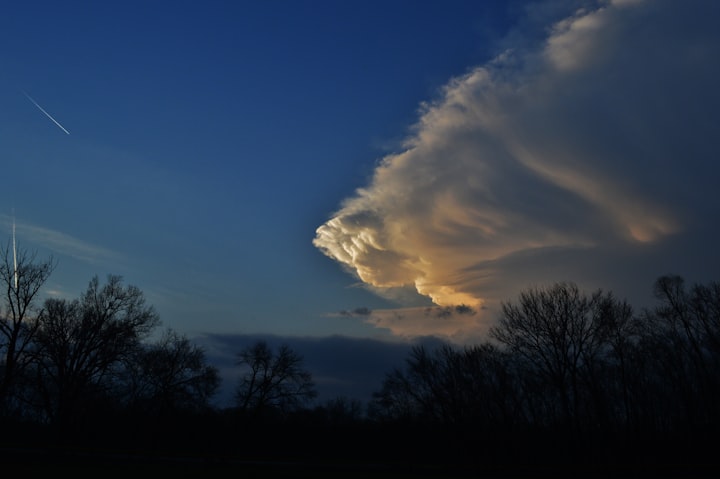"Beyond the Horizon"
Climate refugees: The emotional toll and human suffering endured by people who are forced to leave their homes and communities due to the impacts of climate change, such as rising sea levels, droughts, or extreme weather events.
Part I: Before the Storm
The small coastal village of Havenbrook was a place of tranquility and harmony. Generations had lived and thrived there, forming a close-knit community deeply rooted in the surrounding natural beauty. Maria, a young woman in her twenties, was born and raised in Havenbrook. She knew every winding path, every pebble on the shore, and the comforting whispers of the sea.
Life in Havenbrook was idyllic until the signs of climate change began to manifest. Rising sea levels and increasingly frequent storms battered the village, eroding its protective shoreline. The villagers watched in despair as their homes and livelihoods were slowly devoured by the relentless ocean.
Part II: The Storm Strikes
One fateful night, a violent storm unleashed its fury upon Havenbrook. The winds howled, rain poured relentlessly, and waves crashed against the frail structures of the village. Panic and chaos engulfed the community as people struggled to secure their loved ones and salvage what little they could. The storm ripped through Havenbrook, leaving destruction and despair in its wake.
Maria's family, like many others, lost everything in the tempest. Their home, filled with cherished memories, was reduced to a heap of debris. Maria clung tightly to her younger sister, Sofia, as they sought refuge on higher ground, tears mingling with the rain on their faces.
Part III: The Journey of Desperation
With no other choice, the villagers of Havenbrook became climate refugees, embarking on a treacherous journey in search of safety and a new beginning. Maria, Sofia, and their parents joined the exodus, carrying the weight of loss and uncertainty on their shoulders.
They traveled for days, enduring blistering heat and parched landscapes as droughts plagued the regions they traversed. The once vibrant and fertile lands were transformed into desolate wastelands. Hunger gnawed at their stomachs, mirroring the desperation in their hearts.
Part IV: The Burden of Hope
Finally, after a perilous journey, they arrived at a refugee camp. The camp offered shelter and basic necessities, but it was a far cry from the warm embrace of their village. Maria and her family found themselves amidst countless others who had also been uprooted by the unforgiving forces of climate change.
In the camp, hope mingled with sorrow. People from diverse backgrounds and cultures clung to their dreams of rebuilding their lives, but the weight of their losses was a constant presence. Maria watched as her parents tried to maintain their resilience, offering comforting words despite the weariness etched on their faces.
Part V: The Power of Unity
Despite the hardships, Maria discovered a silver lining in the camp—a community that shared both sorrow and strength. Bonds were formed between strangers, as they supported each other through their collective trauma. Stories were exchanged, tears were shed, and laughter, though fleeting, brought solace.
Within the confines of the camp, Maria found a purpose. She became an advocate for climate refugees, raising her voice to shed light on their plight. Her words resonated with others who felt forgotten and voiceless. Together, they demanded action, urging the world to acknowledge the human suffering inflicted by climate change.
Part VI: The Everlasting Horizon
Years passed, and Maria's family, like many climate refugees, adapted to their new reality. They found solace in rebuilding their lives, despite the scars of their past. Maria became a beacon of resilience, offering support and empathy to those who had endured similar journeys.
As the world slowly awakened to the severity of climate change, efforts to address it intensified. The story of Havenbrook and its refugees became a catalyst for change, a testament to the emotional toll and human suffering caused by the impacts of climate change.
Maria stood on a cliff overlooking the vast expanse of the sea, her gaze fixed on the ever-changing horizon. She felt a mixture of sorrow and determination, knowing that her journey was far from over. But in that moment, she also felt a glimmer of hope—a hope that her experiences and those of countless others would spur humanity to protect and heal the planet they called home.
In the end, Maria vowed to continue fighting for climate justice, driven by the emotional journey she had endured and the collective resilience of all the climate refugees who had become her family. She believed that by sharing their stories, they could inspire the world to rewrite the narrative of climate change, fostering empathy and action for a better, more sustainable future.






Comments
There are no comments for this story
Be the first to respond and start the conversation.